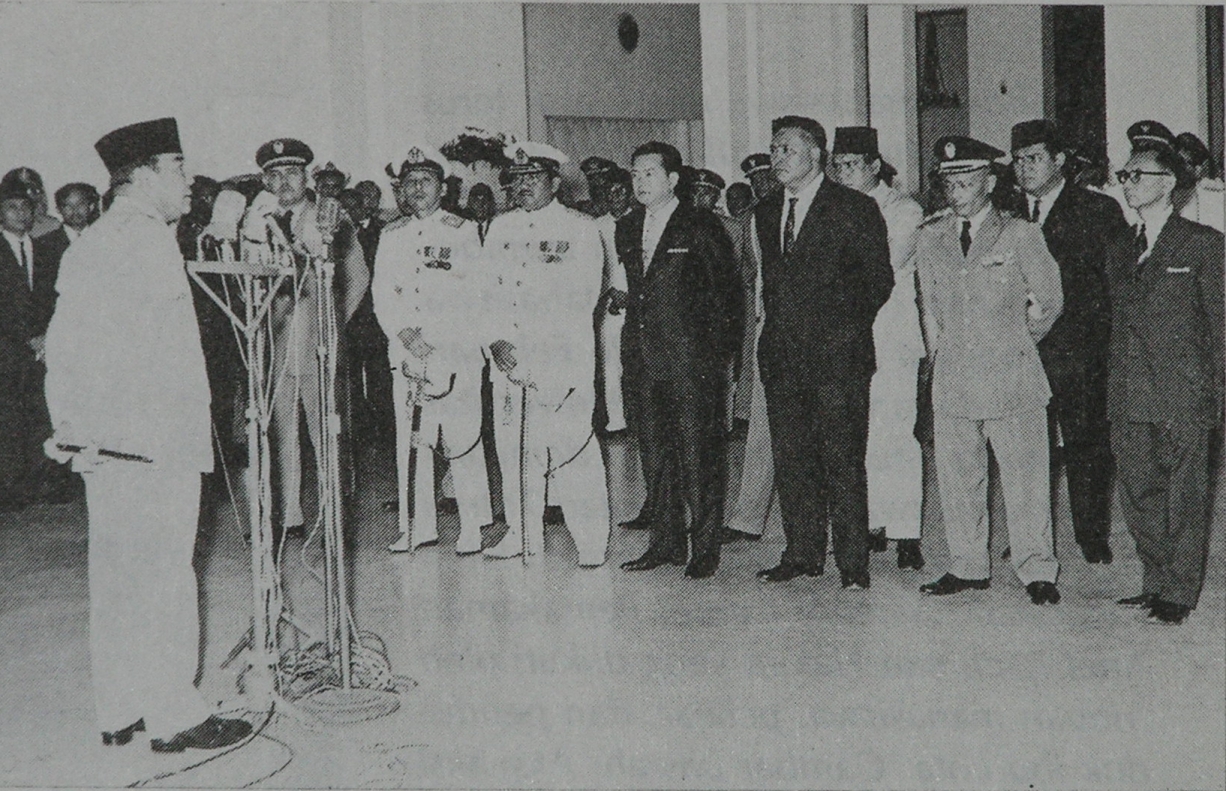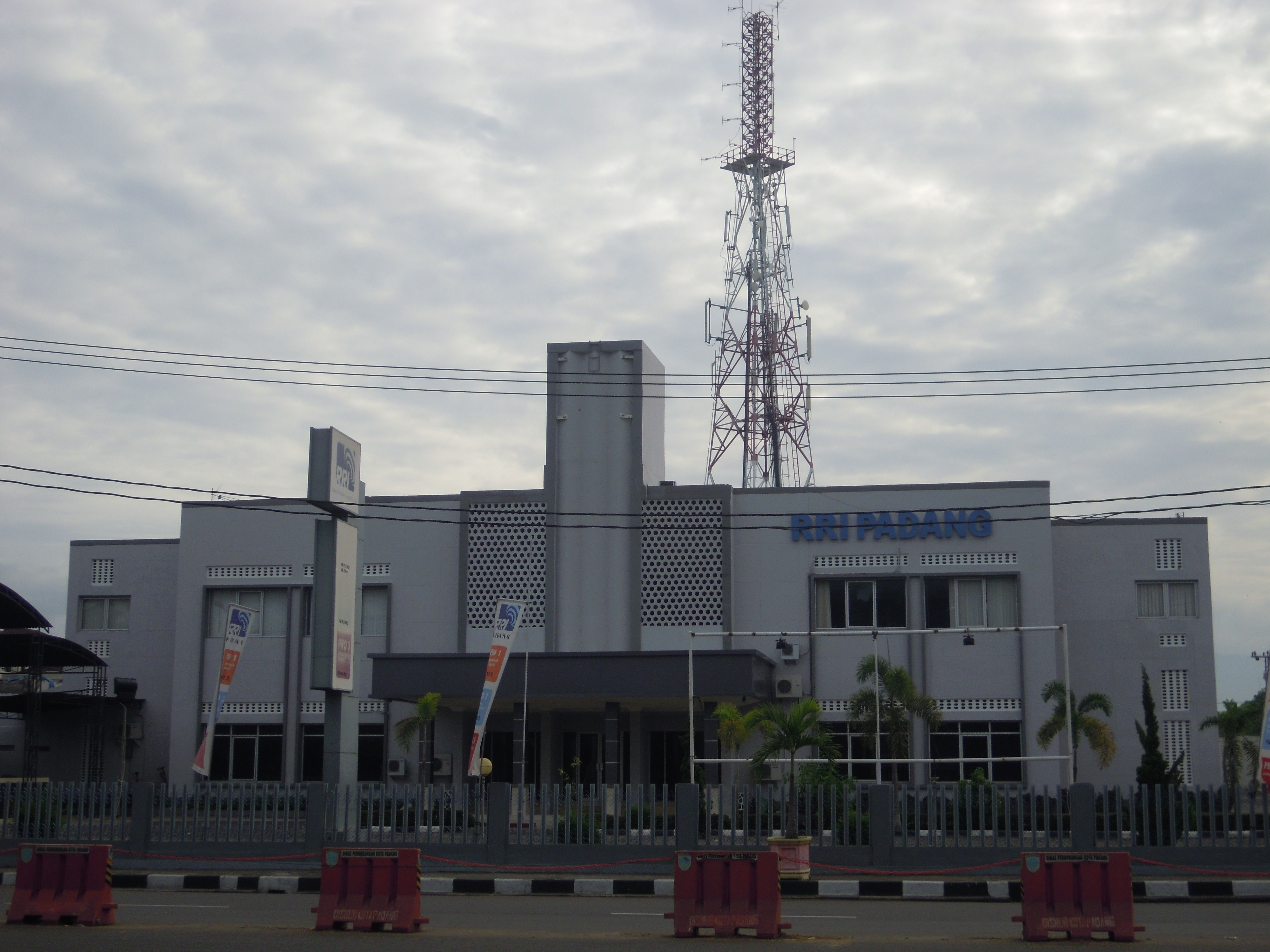|
Setiadi Reksoprodjo
Setiadi Reksoprodjo (18 September 1921 — 28 July 2010) was an Indonesian politician who served as Minister of Information in First Amir Sjarifuddin Cabinet, Junior Minister of Information in Second Amir Sjarifuddin Cabinet, member of the People's Consultative Assembly and the Constitutional Assembly of Indonesia, Constitutional Assembly, and as the Minister of Electricity and Energy in Dwikora Cabinet (Dwikora I) and Revised Dwikora Cabinet (Dwikora II). Setiadi was 25 years and 7 months old when he was appointed as Minister of Information, making him the youngest minister in Indonesia up to this day. Setiadi was born on 18 September 1921, and died on 28 July 2010. He was buried in Kalibata Heroes Cemetery on 29 July 2010. Early life and education Setiadi Reksoprodjo was born on 18 September 1921 in Kutoarjo, Purworejo, Kutoarjo, a town in the Purworejo Regency of Central Java. He was the oldest son of Javanese people, Javanese aristocrat Soekirdjo Reksoprodjo and Koespirah S ... [...More Info...] [...Related Items...] OR: [Wikipedia] [Google] [Baidu] |
Sukarno
Sukarno). (; born Koesno Sosrodihardjo, ; 6 June 1901 – 21 June 1970) was an Indonesian statesman, orator, revolutionary, and nationalist who was the first president of Indonesia, serving from 1945 to 1967. Sukarno was the leader of the Indonesian struggle for independence from the Dutch colonialists. He was a prominent leader of Indonesia's nationalist movement during the colonial period and spent over a decade under Dutch detention until released by the invading Japanese forces in World War II. Sukarno and his fellow nationalists collaborated to garner support for the Japanese war effort from the population, in exchange for Japanese aid in spreading nationalist ideas. Upon Japanese surrender, Sukarno and Mohammad Hatta declared Indonesian independence on 17 August 1945, and Sukarno was appointed president. He led the Indonesian resistance to Dutch re-colonisation efforts via diplomatic and military means until the Dutch recognition of Indonesian independence ... [...More Info...] [...Related Items...] OR: [Wikipedia] [Google] [Baidu] |
Revised Dwikora Cabinet
The revised Dwikora Cabinet ( id, Kabinet Dwikora Yang Disempurnakan) was the Indonesian Cabinet which served under President Sukarno from February 1966 to March 1966. The Cabinet was formed under an extremely tense political situation and it was expected that this Cabinet would address the concerns of the people. It was during a meeting of this Cabinet that unidentified troops surrounded the Presidential Palace causing to Sukarno to escape to Bogor from where he gave Supersemar to Lieutenant General Suharto. President *President/Prime Minister/Supreme Commander of the National Armed Forces of the Republic/Mandatory of the Provisional People's Consultative Assembly (MPRS)/Great Leader of the Revolution: Sukarno Cabinet Presidium *First Deputy Prime Minister/Minister of Foreign Affairs and Foreign Trade: Subandrio *Second Deputy Prime Minister/Coordinating Minister of Distribution/Minister of Higher Education and Science: Johannes Leimena *Third Deputy Prime Minister/Chairman of ... [...More Info...] [...Related Items...] OR: [Wikipedia] [Google] [Baidu] |
Yogyakarta
Yogyakarta (; jv, ꦔꦪꦺꦴꦒꦾꦏꦂꦠ ; pey, Jogjakarta) is the capital city of Special Region of Yogyakarta in Indonesia, in the south-central part of the island of Java. As the only Indonesian royal city still ruled by a monarchy, Yogyakarta is regarded as an important centre for classical Javanese fine arts and culture such as ballet, ''batik'' textiles, drama, literature, music, poetry, silversmithing, visual arts, and '' wayang'' puppetry. Renowned as a centre of Indonesian education, Yogyakarta is home to a large student population and dozens of schools and universities, including Gadjah Mada University, the country's largest institute of higher education and one of its most prestigious. Yogyakarta is the capital of the Yogyakarta Sultanate and served as the Indonesian capital from 1946 to 1948 during the Indonesian National Revolution, with Gedung Agung as the president's office. One of the districts in southeastern Yogyakarta, Kotagede, was the capital of t ... [...More Info...] [...Related Items...] OR: [Wikipedia] [Google] [Baidu] |
Radio Republik Indonesia
''Radio Republik Indonesia'' (Radio of the Republic of Indonesia, abbreviated as RRI), legally ''Lembaga Penyiaran Publik (LPP) Radio Republik Indonesia'' ( Public Broadcasting Institution Radio of the Republic of Indonesia), is a public radio network of Indonesia. Founded on 11 September 1945, it is the first radio network in Indonesia. RRI headquarters are located on Medan Merdeka Barat Street in Central Jakarta. RRI has several radio channels broadcasts all over Indonesia and abroad to serve all Indonesian citizens throughout the nation and overseas. RRI also provides information about Indonesia to people around the world. Voice of Indonesia is the division for overseas broadcasting. History RRI was established on 11 September 1945 by several figures who previously operated several Japanese radio stations in 6 cities. A meeting attended by the station delegates at Adang Kadarusman house on Menteng resulted in the decision to set up ''Radio Republik Indonesia'' by choosing ... [...More Info...] [...Related Items...] OR: [Wikipedia] [Google] [Baidu] |
Socialist Party Of Indonesia
The Socialist Party of Indonesia ( id, Partai Sosialis Indonesia) was a political party in Indonesia from 1948 until 1960, when it was banned by President Sukarno. Origins In December 1945 Amir Sjarifoeddin's Socialist Party of Indonesia (Parsi) and Sutan Sjahrir's Socialist People's Party (Parsas), both of which had only recently been established, merged to form the Socialist Party. Sjahrir became leader of the combined party. It was popular among young intellectuals and students as well as members of the underground movements led by the two men during the Japanese occupation of Indonesia.Kahin (1952) p158 At the end of 1945 the Socialist Party gained five of the 25 seats on the working committee of the Central Indonesian National Committee, the ''de facto'' legislature.Kahin (1952) p171 Both Sutan and Amir served terms as prime minister, while other Socialist Party members held senior cabinet posts.Simanjuntak (2003) From 1947, divisions appeared between Sutan and Amir as A ... [...More Info...] [...Related Items...] OR: [Wikipedia] [Google] [Baidu] |
Proclamation Of Indonesian Independence
The Proclamation of Indonesian Independence ( id, Proklamasi Kemerdekaan Indonesia, or simply ''Proklamasi'') was read at 10:00 on Friday, 17 August 1945 in Jakarta. The declaration marked the start of the diplomatic and armed resistance of the Indonesian National Revolution, fighting against the forces of the Netherlands and pro-Dutch civilians, until the latter officially acknowledged Indonesia's independence in 1949. The document was signed by Sukarno (who signed his name "Soekarno" using the Van Ophuijsen orthography) and Mohammad Hatta, who were appointed president and vice-president respectively the following day. The date of the Proclamation of Indonesian Independence was made a public holiday by a government decree issued on 18 June 1946. Background The beginnings of the independence movement In 1918, the Dutch authorities in the Dutch East Indies established a partly-elected People's Council, the ''Volksraad'', which for the first time gave Indonesian nationalists a ... [...More Info...] [...Related Items...] OR: [Wikipedia] [Google] [Baidu] |
Cirebon
Cirebon (, formerly rendered Cheribon or Chirebon in English) is a port city on the northern coast of the Indonesian island of Java. It is the only coastal city of West Java, located about 40 km west of the provincial border with Central Java, approximately east of Jakarta, at . It had a population of 296,389 at the 2010 census and 333,303 at the 2020 census. The built-up area of Cirebon reaches out from the city and into the surrounding regency of the same name; the official metropolitan area encompasses this regency as well as the city, and covers an area of , with a 2010 census population of 2,363,585; the 2020 census total was 2,603,924. Straddling the border between West and Central Java, Cirebon's history has been influenced by both Sundanese and Javanese culture as well as Arab and Chinese, and is the seat of a former Sultanate. Etymology Being on the border of Sundanese (i.e., Western Java) and Javanese (i.e., Central Java) cultural regions, many of Cirebon's ... [...More Info...] [...Related Items...] OR: [Wikipedia] [Google] [Baidu] |
West Java
West Java ( id, Jawa Barat, su, ᮏᮝ ᮊᮥᮜᮧᮔ᮪, romanized ''Jawa Kulon'') is a province of Indonesia on the western part of the island of Java, with its provincial capital in Bandung. West Java is bordered by the province of Banten and the country's capital region of Jakarta to the west, the Java Sea to the north, the province of Central Java to the east and the Indian Ocean to the south. With Banten, this province is the native homeland of the Sundanese people, the second-largest ethnic group in Indonesia. West Java was one of the first eight provinces of Indonesia formed following the country's independence proclamation and was later legally re-established on 14 July 1950. In 1966, the city of Jakarta was split off from West Java as a 'special capital region' (), with a status equivalent to that of a province, while in 2000 the western parts of the province were in turn split away to form a separate Banten province. Even following these split-offs, West Java is ... [...More Info...] [...Related Items...] OR: [Wikipedia] [Google] [Baidu] |
Japanese Occupation Of The Dutch East Indies
The Empire of Japan occupied the Dutch East Indies (now Indonesia) during World War II from March 1942 until after the end of the war in September 1945. It was one of the most crucial and important periods in modern Indonesian history. In May 1940, Germany occupied the Netherlands, and martial law was declared in the Dutch East Indies. Following the failure of negotiations between the Dutch authorities and the Japanese, Japanese assets in the archipelago were frozen. The Dutch declared war on Japan following the 7 December 1941 Attack on Pearl Harbor. The Japanese invasion of the Dutch East Indies began on 10 January 1942, and the Imperial Japanese Army overran the entire colony in less than three months. The Dutch surrendered on 8 March. Initially, most Indonesians welcomed the Japanese as liberators from their Dutch colonial masters. The sentiment changed, however, as between 4 and 10 million Indonesians were recruited as forced labourers ('' romusha'') on economic deve ... [...More Info...] [...Related Items...] OR: [Wikipedia] [Google] [Baidu] |
Engineer's Degree
An engineer's degree is an advanced academic degree in engineering which is conferred in Europe, some countries of Latin America, North Africa and a few institutions in the United States. The degree may require a thesis but always requires a non-abstract project. North America Canada Through the Canadian Engineering Accreditation Board (CEAB), Engineers Canada accredits Canadian undergraduate engineering programs that meet the standards of the profession. Graduates of those programs are deemed by the profession to have the required academic qualifications to pursue further training towards becoming a licensed professional engineer in Canada. In Canada, a CEAB-accredited engineer degree is the minimum academic requirement for registration as a P.Eng (professional engineer) anywhere in Canada and the standard against which all other engineering academic qualifications are measured. A graduate of a non-CEAB-accredited program must demonstrate that his or her education is at lea ... [...More Info...] [...Related Items...] OR: [Wikipedia] [Google] [Baidu] |
Semarang
Semarang ( jv, ꦏꦸꦛꦯꦼꦩꦫꦁ , Pegon: سماراڠ) is the capital and largest city of Central Java province in Indonesia. It was a major port during the Dutch colonial era, and is still an important regional center and port today. The city has been named as the cleanest tourist destination in Southeast Asia by the ASEAN Clean Tourist City Standard (ACTCS) for 2020–2022. It has an area of and is located at . The population of the city was 1,555,984 at the 2010 censusBiro Pusat Statistik, Jakarta, 2011. and 1,653,524 at the 2020 census,Badan Pusat Statistik, Jakarta, 2021. making it Indonesia's ninth most populous city after Jakarta, Surabaya, Bekasi, Bandung, Medan, Depok, Tangerang and Palembang. The built-up urban area had 3,183,516 inhabitants at the 2010 census spread over two cities and 26 districts. The Semarang metropolitan area (a.k.a. ''Kedungsepur'') has a population of over 6 million in 2020 (''see Greater Semarang section''). The population of the cit ... [...More Info...] [...Related Items...] OR: [Wikipedia] [Google] [Baidu] |





